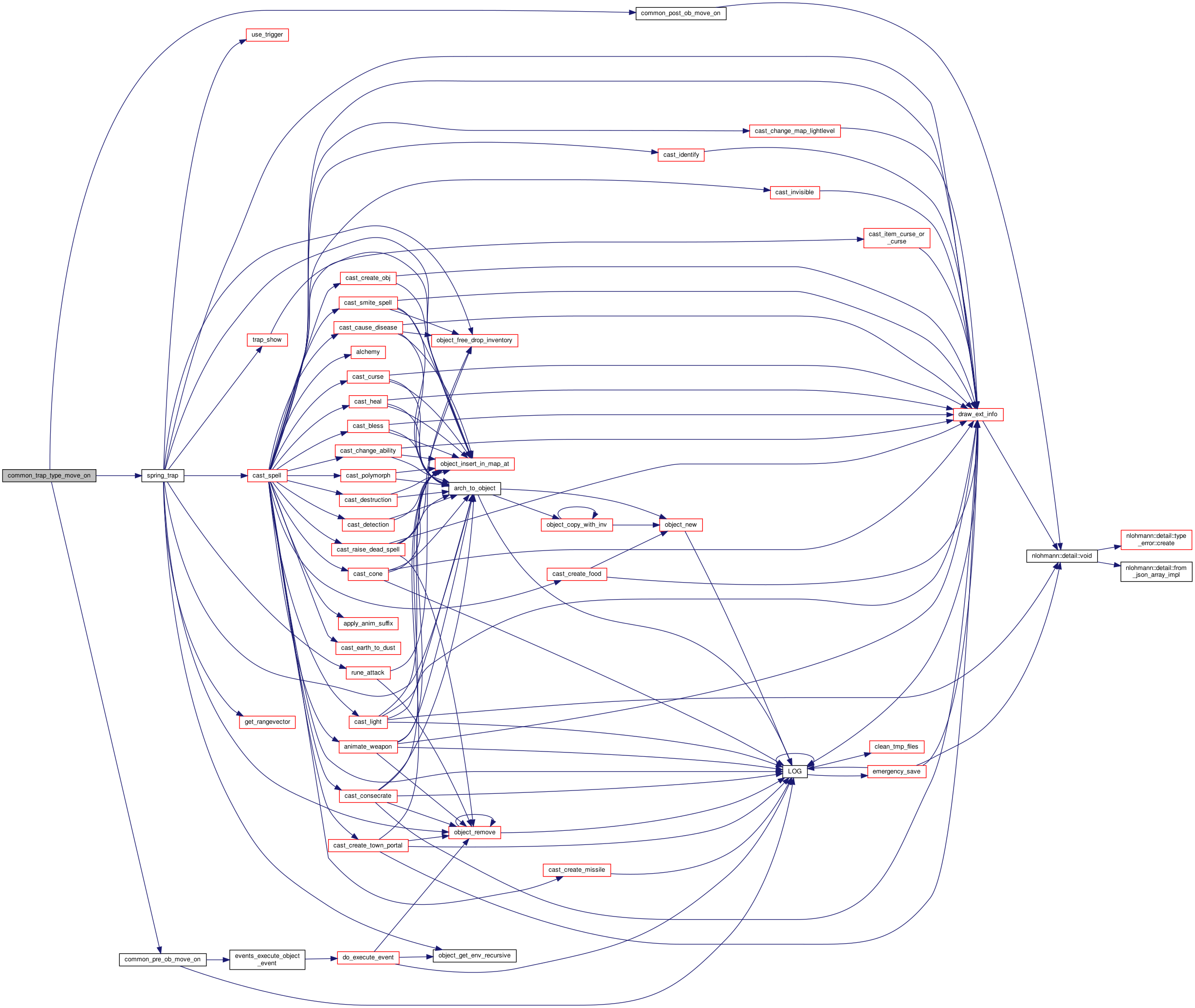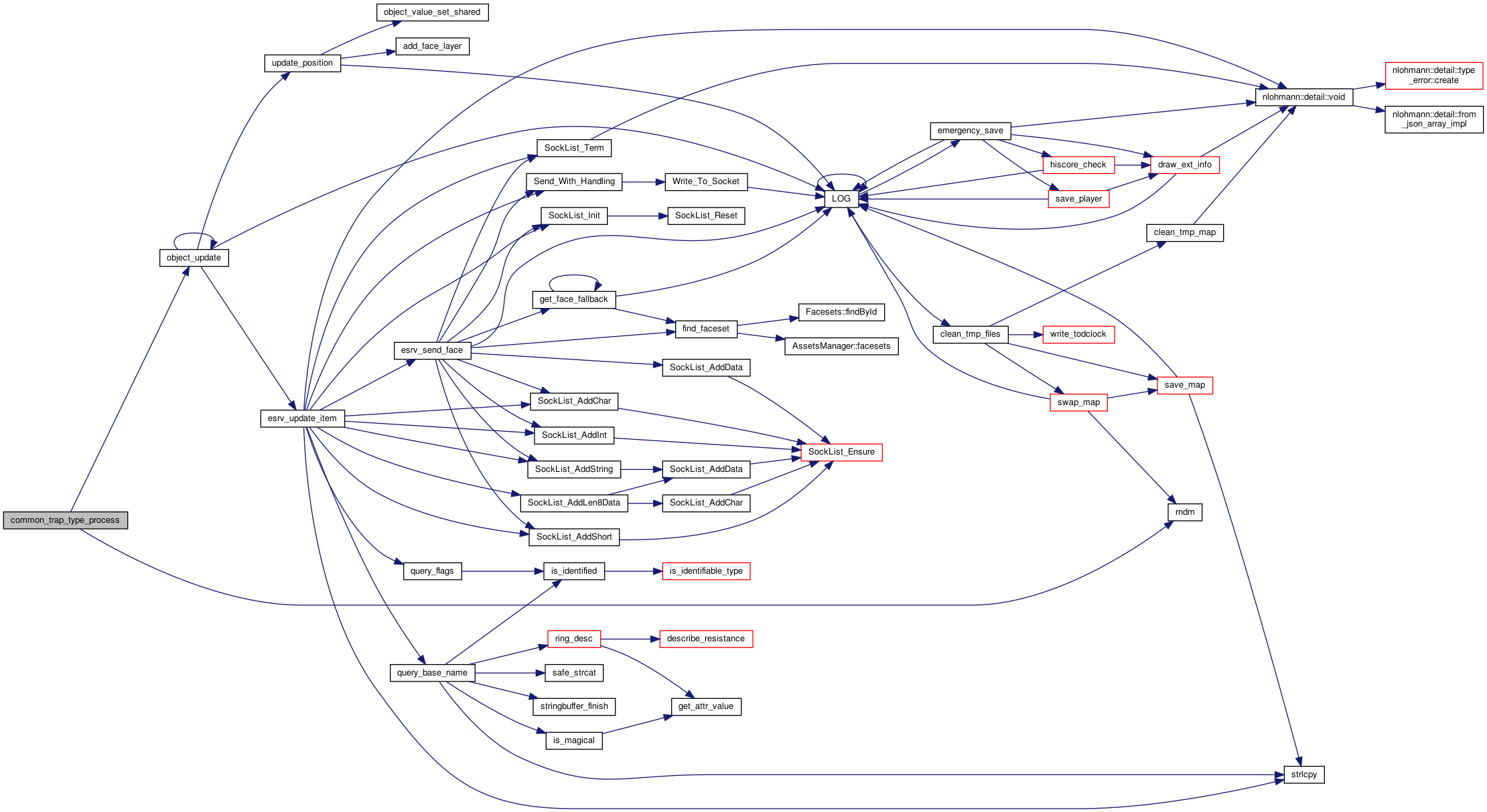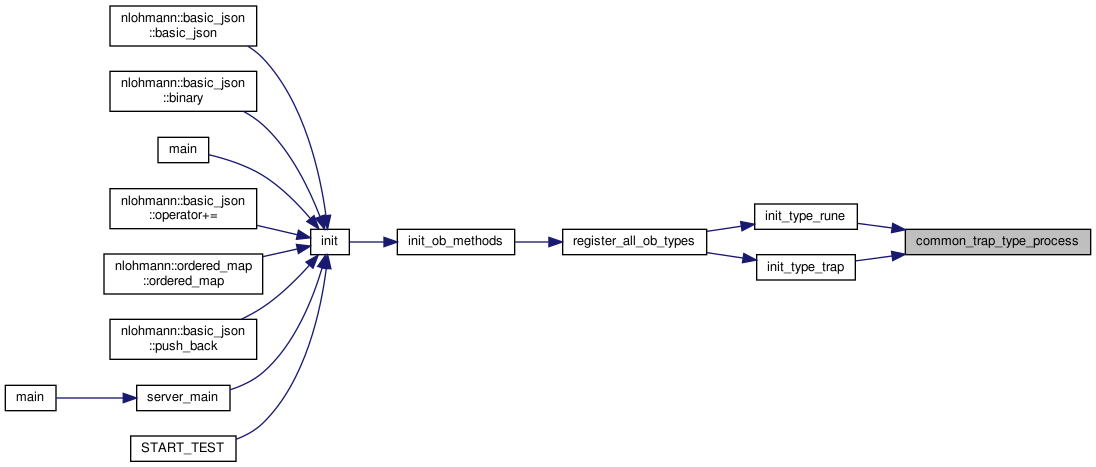#include <global.h>#include <ob_methods.h>#include <ob_types.h>#include <sounds.h>#include <sproto.h> Include dependency graph for common_trap.c:
Include dependency graph for common_trap.c:Go to the source code of this file.
Functions | |
| method_ret | common_trap_type_move_on (object *trap, object *victim, object *originator) |
| method_ret | common_trap_type_process (object *op) |
Detailed Description
Common code for traps and runes.
Definition in file common_trap.c.
Function Documentation
◆ common_trap_type_move_on()
| method_ret common_trap_type_move_on | ( | object * | trap, |
| object * | victim, | ||
| object * | originator | ||
| ) |
Move on this Rune or Trap object.
- Parameters
-
trap The rune or trap we're moving on victim The object moving over this one originator The object that caused the move_on event
- Returns
- METHOD_OK
Definition at line 40 of file common_trap.c.
References common_post_ob_move_on(), common_pre_ob_move_on(), FLAG_ALIVE, obj::level, METHOD_ERROR, METHOD_OK, QUERY_FLAG, spring_trap(), and reputation::victim.
Referenced by init_type_rune(), and init_type_trap().
 Here is the call graph for this function:
Here is the call graph for this function: Here is the caller graph for this function:
Here is the caller graph for this function:◆ common_trap_type_process()
| method_ret common_trap_type_process | ( | object * | op | ) |
Processes a Rune or Trap. Comments on runes (and traps): rune->level : level at which rune will cast its spell. rune->hp : number of detonations before rune goes away rune->msg : message the rune displays when it goes off rune->direction : direction it will cast a spell in rune->dam : damage the rune will do if it doesn't cast spells rune->attacktype: type of damage it does, if not casting spells rune->other_arch: spell in the rune rune->Cha : how hidden the rune is rune->maxhp : number of spells the rune casts
- Parameters
-
op The rune or trap to process
- Returns
- Always METHOD_OK
Definition at line 64 of file common_trap.c.
References MAX, METHOD_OK, object_update(), give::op, rndm(), and UP_OBJ_FACE.
Referenced by init_type_rune(), and init_type_trap().
 Here is the call graph for this function:
Here is the call graph for this function: Here is the caller graph for this function:
Here is the caller graph for this function:




